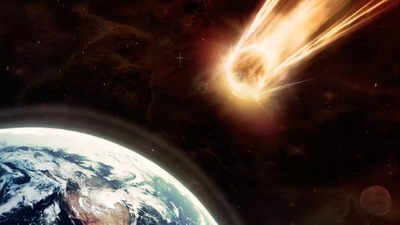Asteroid 2024 YR4 may hit Earth in 2032 |

Asteroid 2024 YR4 is heading towards Earth. The newly detected asteroid has caught the attention of NASA, and the new imagery shows that it could impact Earth in 2032. The likelihood of impact is 1.9%, which is a slight increase from the earlier estimate of 1.6%.
The asteroid discovered in Dec 2024, by a NASA-funded observatory in Chile, measures between 130 and 300 feet. This asteroid can be comparable to a small skyscraper or a football field. The asteroid is estimated to be between 40 m and 100 m wide. The European Space Agency (ESA) noted that an asteroid this size impacts Earth on average every few thousand years and could cause severe damage to a local region. The size and proximity of the asteroid have attracted the attention of the world, however, the experts have assured that the risk of a catastrophic impact is minimal.
“We are not worried at all, because there’s a 99 percent chance it will miss… But it deserves attention,” Paul Chodas, director of NASA’s Center for Near-Earth Object Studies said.
According to ESA, the asteroid 2024 YRF “has an almost 99% chance of safely passing Earth on 22 December 2032, but a possible impact cannot yet be entirely ruled out.”
The Asteroid 2024 YR4 is rated at Level 3 on the Torino Impact Hazard Scale currently, which is a close encounter that warrants attention from astronomers and the public. The ESA has compared this newly detected meteoroid to Apophis, a 375-meter-wide space rock that briefly reached Level 4 in 2004. Aphophis, at its peak, had a 3% probability of impact, which is the highest ever recorded for an asteroid of significant size. Further analysis from 2004 confirmed that there was no risk of collision.
Meanwhile, NASA has been keeping an eye on near-Earth objects (NEOs) for decades. The agency has been particularly observing the NEOs that could come within 30 million miles of our planet. NASA has been monitoring near-Earth objects (NEOs) for decades, focusing on those that could come within 30 million miles of our planet. At present, over 25,000 such objects are being tracked, and most of them are too small to be concerned.
















